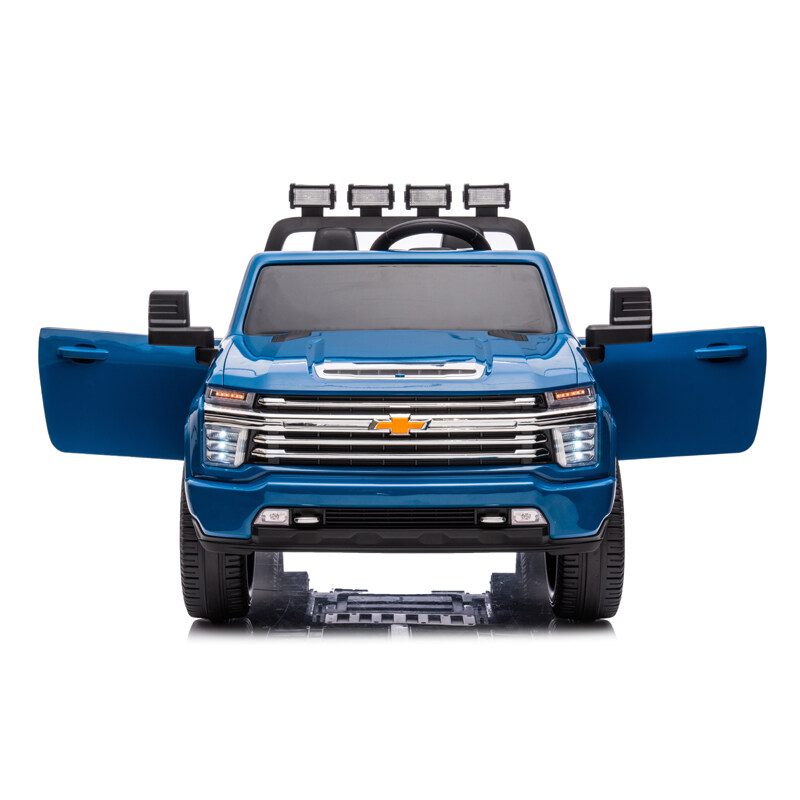Email format error
Email cannot be empty
Email already exists
6-20 characters(letters plus numbers only)
The password is inconsistent
Email format error
Email cannot be empty
Email does not exist
6-20 characters(letters plus numbers only)
The password is inconsistent


When it comes to choosing the perfect ride-on car for your little one, one of the most important decisions you'll make is selecting the right battery voltage. The two most common options are 6V ride-on cars and 12V ride-on cars, each offering unique benefits and considerations. In this article, we'll explore the differences between these two battery types, helping you determine which one is the best fit for your child's needs and your family's preferences.
At its core, the voltage difference between a 6V and a 12V battery is straightforward: a 6V battery provides half the power of a 12V battery. This means that a 12V battery can generate more speed and power, making it suitable for a wider range of activities and terrains.
The voltage directly impacts the performance of the ride-on car. A 6V battery typically powers ride-on vehicles at a speed of about 2-3 mph, which is perfect for young toddlers who are just starting to explore their surroundings. On the other hand, a 12V battery can propel the car to speeds of around 5-6 mph, offering a more thrilling experience for older children.
For younger children, typically between the ages of 2 and 4, a 6V battery is often the safest choice. It provides a gentle and controlled ride, allowing them to build their confidence without the risk of going too fast. As children grow and become more comfortable with operating the vehicle, a 12V battery can be introduced to offer more excitement and challenge.
With a 6V battery, the lower speed means that children can generally play more independently, with less need for constant adult supervision. However, it's still important to keep an eye on them, especially if they're new to riding. For a 12V battery, due to the increased speed and power, more careful supervision is necessary to ensure safety and prevent accidents.
As mentioned earlier, the primary difference in performance between 6V and 12V batteries is the speed they can achieve. The higher voltage of a 12V battery not only allows for faster speeds but also enables the car to handle more weight and operate additional features, such as headlights, horn sounds, and even an MP3 player. This makes 12V ride-on cars more versatile and engaging for children.
A 6V battery is best suited for smooth, flat surfaces, such as indoor floors or paved outdoor areas. It may struggle with rough terrains or steep inclines, limiting where your child can use their ride-on car. In contrast, a 12V battery provides more power, allowing the car to navigate uneven surfaces and gentle slopes with greater ease.
Both 6V and 12V batteries require regular charging to maintain optimal performance. A 6V battery typically takes about 10 hours to fully charge using a standard charger. A 12V battery also requires around 10 hours for a full charge. However, due to the increased power usage of a 12V battery, it may need to be charged more frequently than a 6V battery, depending on usage patterns and the car's features.
The lifespan of a ride-on car battery depends on various factors, including the voltage, usage frequency, and maintenance. Generally, a 6V battery lasts for about 45 minutes to an hour of continuous use on a flat surface. A 12V battery offers a slightly longer lifespan, providing around one hour of continuous use. To maximize the battery's lifespan, it's essential to follow proper maintenance practices, such as using the manufacturer's charger, avoiding overcharging, and storing the battery correctly when not in use.
When it comes to cost, 6V ride-on cars are generally more affordable than their 12V counterparts. This is because the lower voltage requires less powerful components and fewer features. If you're on a budget or purchasing a ride-on car for a very young child who may quickly outgrow it, a 6V option can be a cost-effective choice.
While the initial purchase price of a 6V ride-on car may be lower, it's important to consider long-term expenses as well. As your child grows and desires more speed and power, you may need to upgrade to a 12V car, incurring additional costs. Additionally, the more frequent charging required for a 12V battery could lead to higher electricity expenses over time.
A few years ago, I purchased a 6V ride-on car for my nephew when he was just three years old. He was thrilled with the gift and spent hours each day driving around the house and our backyard. The 6V battery provided a safe and controlled experience, allowing him to enjoy the car without any accidents or concerns. As he grew older and more confident, we upgraded to a 12V ride-on car, which offered faster speeds and more advanced features. This new car kept him entertained for years, as he could now explore larger areas and even go on adventures with his friends.
In conclusion, the choice between a 6V and 12V ride-on car battery depends on your child's age, skill level, desired performance, and your budget. For young toddlers, a 6V battery offers a safe and gentle introduction to ride-on cars, while a 12V battery provides more excitement and versatility for older children.
If you're looking for a reliable and high-quality ride-on car with a 12V battery, I highly recommend checking out Goldenbaby. They offer a wide range of children's cars, including options with 12V batteries that provide excellent performance and safety features. Their commitment to quality and customer satisfaction makes them an excellent choice for parents seeking the perfect ride-on car for their little ones.